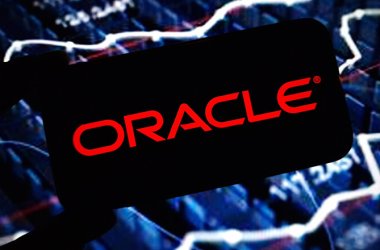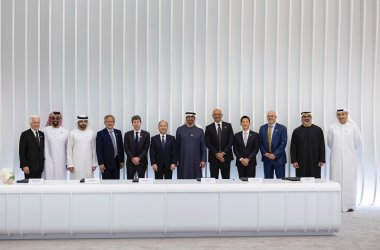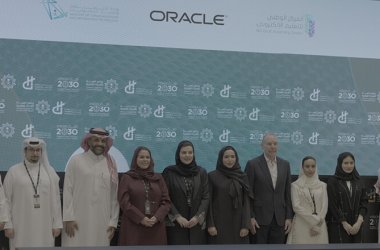 Oracle has launched its new Sparc T4 processor, along with new hardware that it hopes will turn up the heat on server rivals Hewlett-Packard and IBM, the company said.
Oracle has launched its new Sparc T4 processor, along with new hardware that it hopes will turn up the heat on server rivals Hewlett-Packard and IBM, the company said.
CEO Larry Ellison was, as usual, in feisty form when he took to the stage at Oracle’s headquarters Monday to launch the products. He made several bold performance claims and said he’s “looking forward” to competing for IBM’s customers.
The T4 is the latest addition to the Sparc processor family developed by Sun Microsystems, which Oracle acquired last year. It has eight processor cores, down from 16 in the T3, but each core runs at up to 3GHz, compared to the T3’s 1.65Ghz, the company said. That helps gives the T4 five-times the single-threaded performance of its predecessor, according to Ellison.
The Sparc T4 is available now in standard rack and blade servers, priced from US$16,000 to $160,000, Oracle said. It will also be used in the Sparc SuperCluster, a high-end system that will pack 1,200 CPU threads in a single system the size of a server rack, the company said.
Oracle still won’t give pricing for the SuperCluster, which it first talked about last year. Nor would it give a firm ship date, although John Fowler, executive vice president for Oracle’s systems group, said that the product will be out by the end of the year.
It’s similar in some ways to Oracle’s Exadata Database Machine and Exalogic Elastic Cloud, analysts said. In all three cases, Oracle said it has tightly engineered the server, storage and network components to optimise performance, and integrated its software on top of that.
But while the Exalogic system is for running middleware and the Exadata machine for data warehousing and online transaction processing, the SuperCluster is designed for general purpose computing, including standard enterprise resource planning applications, analysts added.
The machine includes four Sparc T4 server nodes, each with four sockets; Infiniband switches; ZFS storage appliances; and Oracle’s Exadata storage servers, Oracle representatives said. It can be purchased in a half rack configuration, or as a full rack with 4TB of DRAM and up to 198TB of hard disk space, representatives added.
Up to eight racks can be linked together with a single system image, Ellison said. “This is a very big machine,” he said.
Some of the components overlap with those in the Exadata Database machine, Oracle said. But the SuperCluster has less of Oracle’s specialised database storage servers and adds standard storage instead, in addition to which it also devotes more space to compute power, the company said.
“You can add more Exadata storage cells in a second rack if you want to … but the original rack trades a certain amount of Exadata storage for general storage, to be a more general purpose system,” Fowler said.
“If you’re going to run just the Oracle 11 database, Exadata is definitely the product for you. … But if you want to run PeopleSoft or SAP or homegrown applications in the same cluster, you could do that with the SuperCluster but not with [the Exadata Database machine],” he said. “That’s the simplest way to define the difference.”
Ellison claimed a full Sparc SuperCluster rack can outperform IBM’s high-end Power 795 server “by a long shot.” IBM declined to comment on any of his claims. “The SuperCluster has storage bandwidth of 42 GB/sec and can perform 1.2 million input/output operations per second,” Ellison said.
“Oracle is throwing a lot of performance-oriented red meat to their installed base of loyal Sparc and Solaris customers,” said industry analyst Dan Olds of Gabriel Consulting. “They touted a lot of benchmarks and comparisons to both IBM and x86 commodity servers. But it remains to be seen if this is enough to convince new customers to start buying Sparc hardware again,” Olds added.
“The SuperCluster aims to give an easy upgrade path from existing Sparc systems. It will be offered with Oracle’s new Solaris 11 OS, but customers can run Solaris 10 if they prefer,” Fowler said. “Solaris 11 includes enhancements that will better be able to handle higher thread-counts and faster I/O bandwidth, however,” Fowler added.
When Oracle first acquired Sun, many questioned its commitment to the Sparc platform. But Ellison has made it a cornerstone of Oracle’s strategy, building pricey but powerful machines that combine Sun and Oracle technologies.
The company has a Sparc 5 processor on its road map. Fowler wouldn’t say much about that chip, except that Oracle is ahead of schedule with its development.





